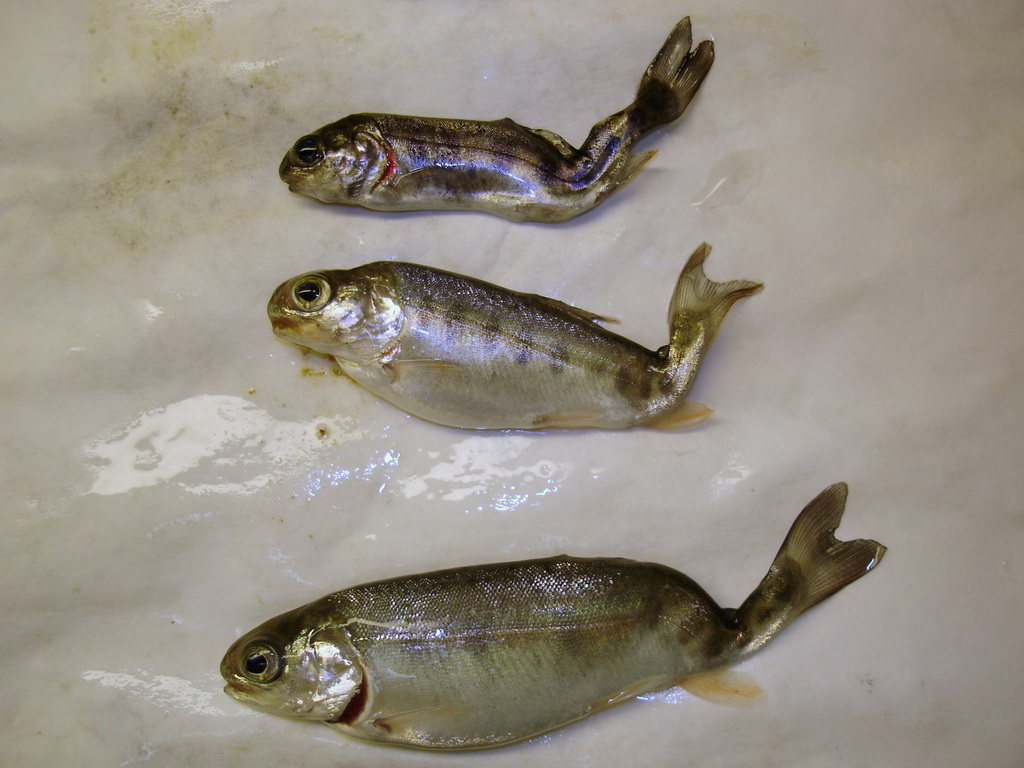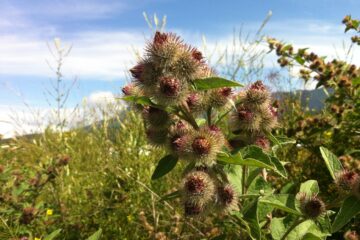Cleaning, Draining, and Drying watercraft can prevent the introduction of a deadly fish disease
Boating season is quickly approaching! As we welcome the arrival of spring and warmer weather, we are hoping invasive hitchhikers keep away for another season. With more visitors and watercraft travelling across the province, there is an increased risk of an accidental introduction of invasive species, including whirling disease, an invasive species often overshadowed by zebra and quagga mussels.
Whirling disease is caused by a microscopic parasite called Myxobolus cerebralis and causes young salmonid fishes, including whitefish, trout and salmon species, to die prematurely. As the name suggests, infected fish are often found swimming in an abnormal whirling pattern as the disease causes damage to the cartilage in the backbone. This makes it difficult for young fish to feed and avoid predators.
In the U.S., whirling disease has been present since the 1950’s and caused significant decreases in many salmonid populations. In Montana and Colorado, some populations of rainbow trout declined by 90% after the disease was introduced.
Whirling disease was first detected in Canada at Banff National Park in 2016 and has since spread across Alberta through infected rivers. There is no treatment for the disease and extreme measures, including lowering water levels and removing fish from a lake, have been used to prevent the disease from spreading further into Banff National Park. There are currently no known occurrences of whirling disease in B.C.
“The introduction of whirling disease to B.C. could threaten both trout and salmon populations, as well as damage tourism and recreation opportunities for residents and visitors alike,” said Sue Davies, Interim Executive Director of the Columbia Shuswap Invasive Species Society (CSISS).
It is still a mystery how the disease first arrived in Canada but the occurrence in Banff National Park highlights the high potential for humans to serve as vectors for transporting invasive species.
“Unfortunately, human activities, particularly transporting dirty watercraft, can be a leading cause of transmission of aquatic invasive species,” explained Davies. The disease can also be transmitted through dead infected fish, so discarding any part of a fish, alive or dead, in lakes or rivers could contribute to the spread of the disease. The spores of the disease can also survive waste water treatment systems, so it is very important to ensure that all fish waste, including unused bait, is disposed of in the garbage and not down the drain.
To help prevent the spread of whirling disease into B.C., boaters and anglers should be particularly vigilant about cleaning their equipment after visiting Alberta or the U.S. Travellers bringing watercraft into B.C. must stop at any watercraft inspection station.
As a routine practice to prevent the spread of aquatic invasive species, all watercraft and fishing gear should be thoroughly cleaned, drained and dried between waterbodies. “It’s so simple to Clean Drain Dry your watercraft, and it could mean the difference between spreading or containing this disease,” Davies said.
Members of the public are encouraged to report any suspected invasive species using the provincial “Report Invasives BC” smartphone application (available for download from www.gov.bc.ca/invasive-species) or, if invasive mussels are suspected, to call the Report All Poachers and Polluters hotline at 1-877-952-7277.



